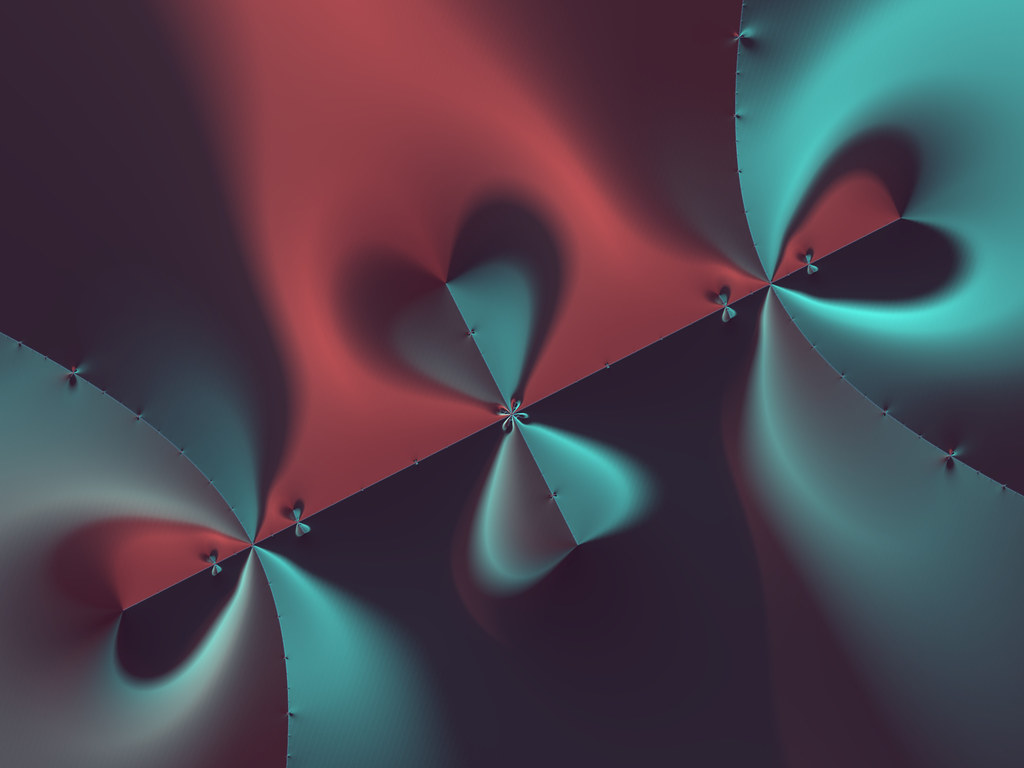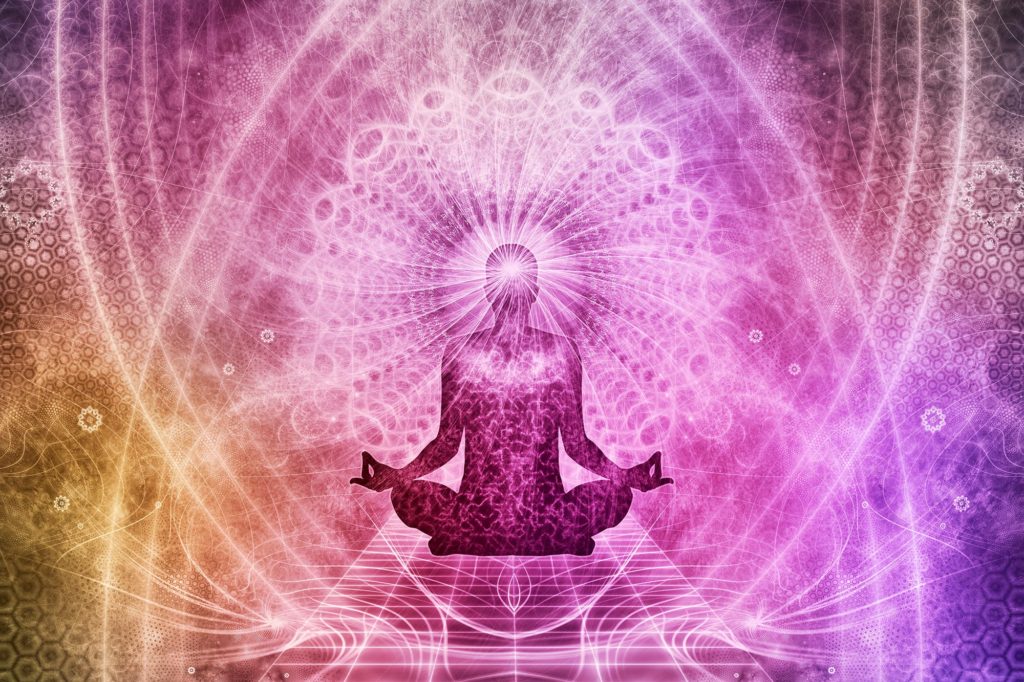
The first attempt, using a complicated setup involving a metal crucible, a glass chamber with a seal and a powerful blowtorch, failed in a flash, bang and puff of smoke. There was enough for a second hit, which I tried using the “Terence McKenna Method” of a bong half-filled with cannabis, then a layer of DMT, then some more cannabis. It was hard to light but, thanks to the assistance of a nearby shaman, I managed to blast it back and hold it in.
My first impression was that it felt a lot like salvia, except pleasant. It brought with it a salvia-like experience of the edges of perception vibrating harder and harder until normal perception broke down. As with salvia, I had the sense of seeing entire universes within the smallest fragment of the material world. One such fragment was the ceiling boards above the couch where I lay.
The background music playing, a pleasant downbeat ambient, collapsed into a single tone, a high-pitched frequency that I realised was the same as the Hindu Om, i.e. the frequency of the Universe. I heard this tone in the centre of my head as I felt the particles of my body vibrate and melt into the couch. Also like the salvia, the DMT seemed to enable my soul to look past the restrictions of the body, i.e. vision was no longer restricted to the senses of the eyes.
The only major difference to the salvia was that the DMT felt really good.
These ceiling boards I stared at seemed to dissipate, as if the particles maintaining the illusion of them had become too high-energy, and they left behind a gloriously multicoloured fractal that vibrated intensely. The longer I looked into this fractal, the more it started to take three-dimensional form, with a number of corridors stretching away from me and away from the immediate surface.
On the walls closest to me, i.e. those not stretching away to form the corridors, faces appeared. At first these were Olmec-style colossal heads. The central one, and the undulations of its colours, transfixed me. Soon it formed into the face of a tuatara, which watched me out of both eyes. I realised that I was being observed by God, who was behind the face of the tuatara, as I was myself God observing the tuatara from behind my own face.
Ensorcelled by these strange hallucinations, the visions before me seemed more true than the material world that I had just come out of. I realised that this was how it felt to die, for one’s consciousness to shed the coat of skin that it’s adorned with in this life – and that to die was the most natural thing in the world.
In the same way that, after you breathe in, the most natural thing is to breathe out, so after you live, the most natural thing is to die. It’s nothing to fear in the slightest.
Life in this space is an experience that our individual fragments of consciousness chose to have. In choosing to do so, they stepped down out of the true reality and into this space, which we call “The World”, but which is more like a single room off a narrow street that itself connects to a larger street which itself connects to a larger street and so on. The great trunk line of reality is somewhere else.
We choose to incarnate into this realm, and after this life we incarnate out of it again. Life is much like a protracted bungee jump: the beginning is terrifying, with a rush of barely comprehensible sensations, then you get used to the fear to some degree, and soon enough you’re back on the platform watching others do it. It’s all very entertaining, and accords with the understanding of Elementalism that the meaning of life is to entertain the gods.
I had a vision of having been buried inside a coffin and reaching out above my head, rising through my own crown chakra and through the ground, into the light above. In that space in the light above was the real world, and there were all the consciousnesses that had ever shared time or space with me here in the material world. They are only ever separated from the rest of us by the flimsiest of veils, one that can be broken through in a moment.
I was not in this space for long – either the dose was not the absolute strongest or some medication prevented the DMT from reaching its full effect. But it was long enough for me to remember the reason why I incarnated into this planet to have this particular life. To do so would afford the opportunity to rebalance the frequency of my consciousness, which had become imbalanced owing to decisions (and patterns of decisions) taken in previous lives.
In this life on Earth, I was born into poverty because I had not sufficiently appreciated wealth in previous lives, and that had left an impact on the frequency of my consciousness. I was born into violence, and was forced to encounter violence, because I had been violent in previous lives, and that had also left an impact on the frequency of my consciousness. I was born into spiritual ignorance for similar reasons.
Incarnating into an environment that is impoverished in these ways trains the frequency of one’s consciousness to appreciate them more. To that end, I said Yes to everything that I would experience during this life, and therefore have no cause for any resentment.
No matter how grim life on Earth may get, the experience serves to rebalance the frequency of one’s consciousness so that one may attain higher dimensions after the death of one’s physical body. As such, there’s no reason to say No to any of it. Even in dying and death, the experience can be embraced. If this is done, one’s consciousness will return to the real world above in a well-balanced state.
These realisations brought with them a powerful sense of the fundamental allrightness of the Universe. I understood that there was a way of perceiving reality so that none of the miseries in this world caused real suffering, and therefore that Plato was correct, when he wrote at the end of Timaeus, that this really is the best of all possible worlds.
There’s no reason to feel any real resentment, not even at the genuine shitness of some of the aspects of life in this world, because enduring them trains the frequency of one’s consciousness to appreciate their absence. The hunger, violence, lies, depression, misery and pain in this world train us to appreciate worlds in which they don’t exist (or are less pressing).
This was a great revelation for me, as I have always struggled with not really wanting to be in this place. These sentiments were especially strong after my grandparents died in 2016. DMT helped me realise that they (like everyone else that has ever incarnated into this world) wait for me in the real world above, and that the best thing is that our inevitable reunion follows a glorious life here, and not an inglorious one. We truly are heroes living under the eyes of the gods.
*
If you enjoyed reading this essay/article, you can get a compilation of the Best VJMP Essays and Articles of 2020 from Amazon for Kindle or Amazon for CreateSpace (for international readers), or TradeMe (for Kiwis). A compilation of the Best VJMP Essays and Articles of 2019, the Best VJMP Essays and Articles of 2018 and the Best VJMP Essays and Articles of 2017 are also available.
*
If you would like to support our work in other ways, please consider subscribing to our SubscribeStar fund. Even better, buy any one of our books!



